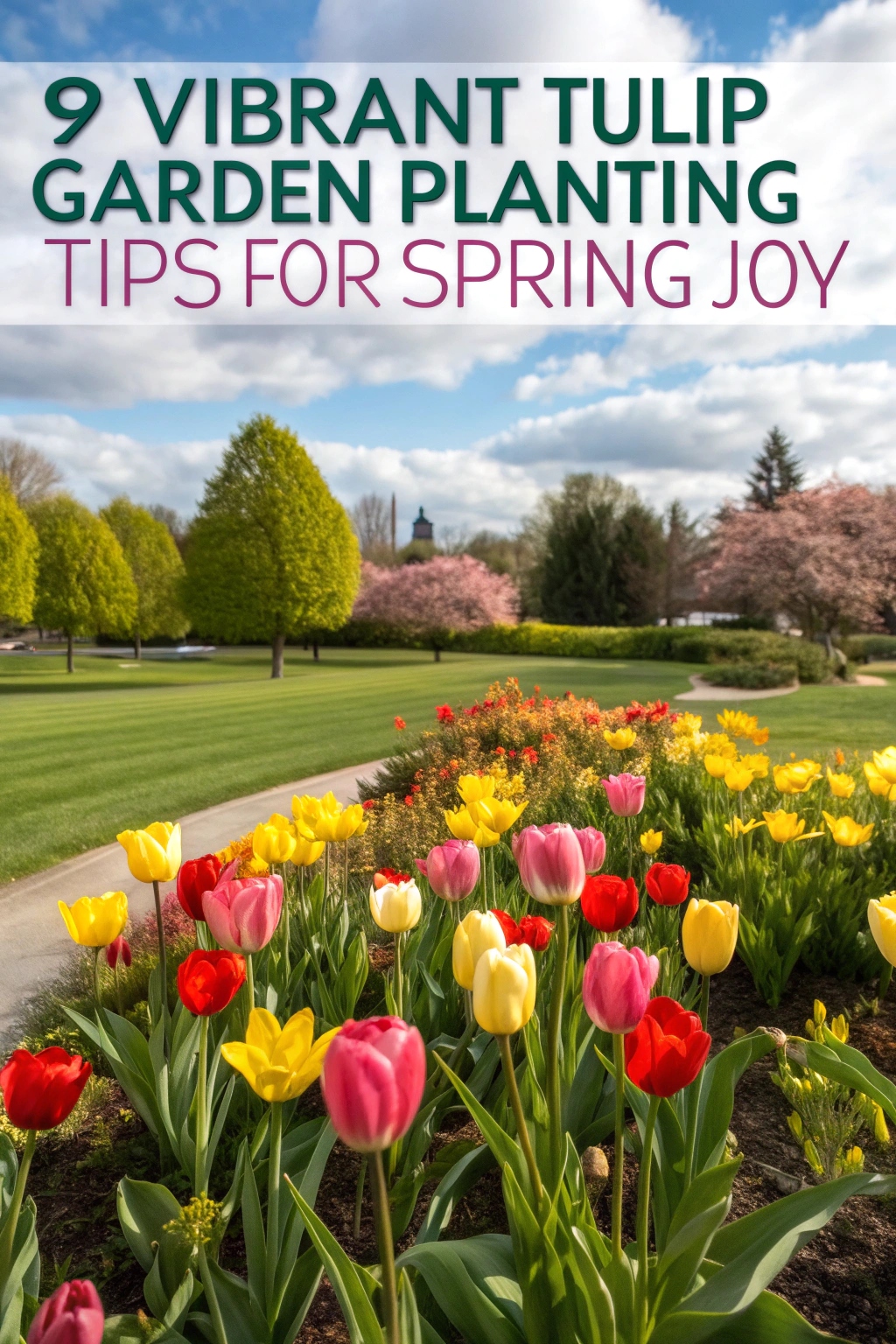As you start planting for spring, a beautiful garden is waiting for you. You will learn how to pick the perfect tulip flowers, get the soil ready, and make a stunning show. This will make your garden look amazing and full of colors.
Are you wondering how to make your tulips bloom together in harmony? The key to a vibrant tulip garden is choosing the right flowers and taking good care of them. By following some simple tips, you can create a stunning display of colors in your garden.
Choosing the Perfect Tulip Varieties
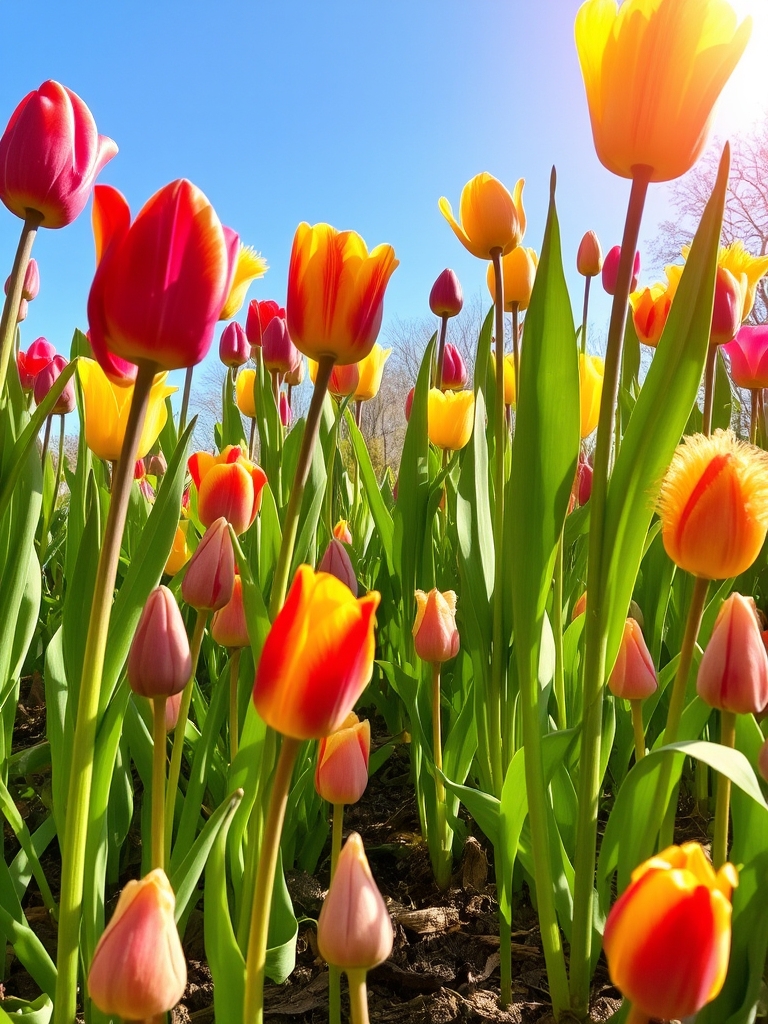
When choosing tulip varieties, consider factors such as bloom time, height, and color to create a diverse and visually appealing garden. Select from classic cup-shaped, delicate lily-flowering, or vibrant viridiflora types to add texture and interest. Some varieties also boast unique characteristics like fringed or double petals, further enhancing the garden’s beauty.
Preparing the Soil for Tulip Planting
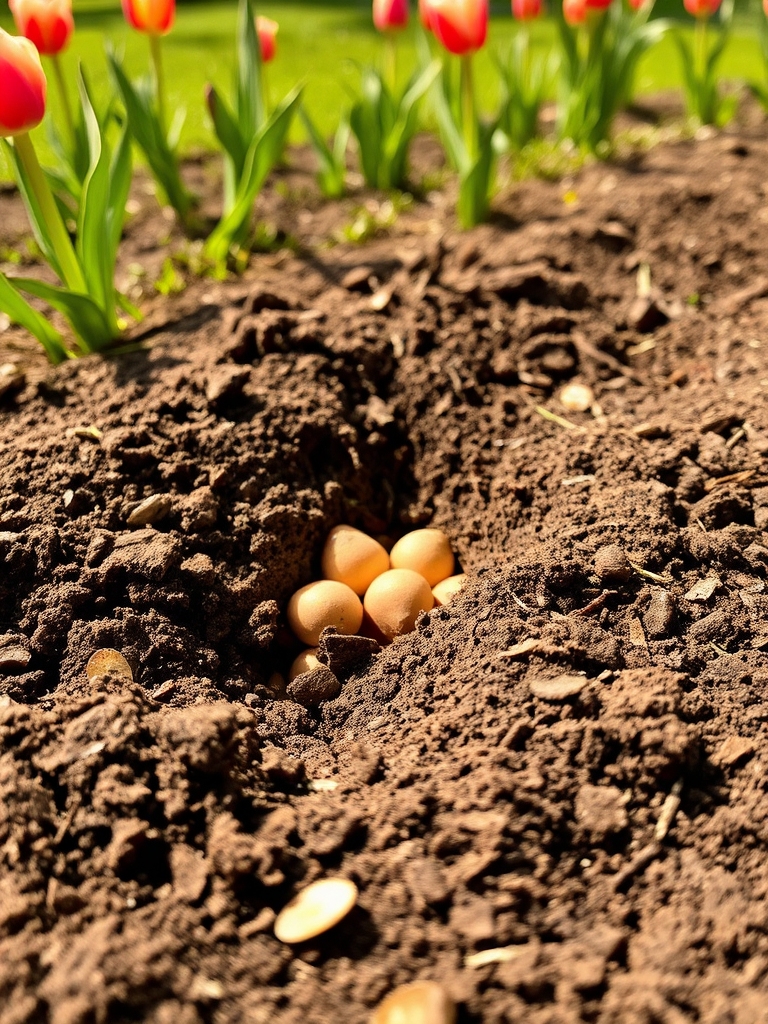
To prepare the soil for tulip planting, loosen it to a depth of 12-15 inches. Mix in organic matter like compost or well-rotted manure to improve drainage and fertility. Test the soil pH and adjust if necessary, as tulips prefer slightly acidic to neutral soil with a pH between 6.0 and 7.0.
Selecting the Ideal Planting Location
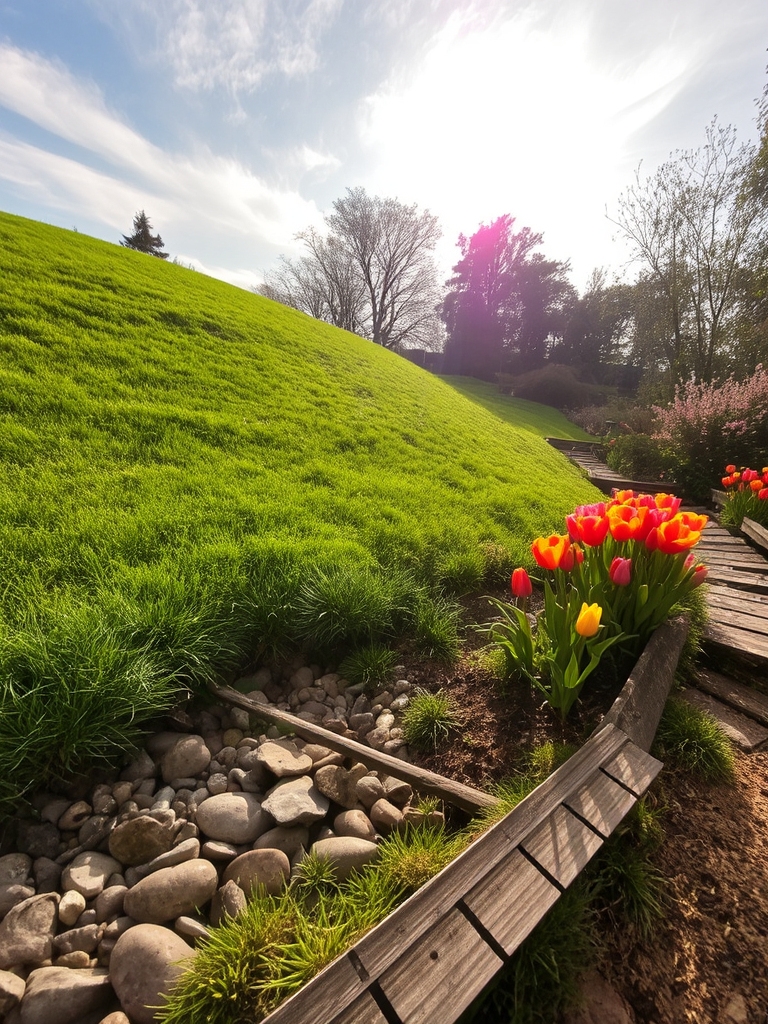
Selecting the ideal planting location is essential for tulip garden success. Choose a spot with full sun to partial shade and well-draining soil to prevent waterlogged soil. Avoid areas with standing water or where water tends to collect, as this can lead to root rot and poor growth.
Understanding Tulip Bloom Times
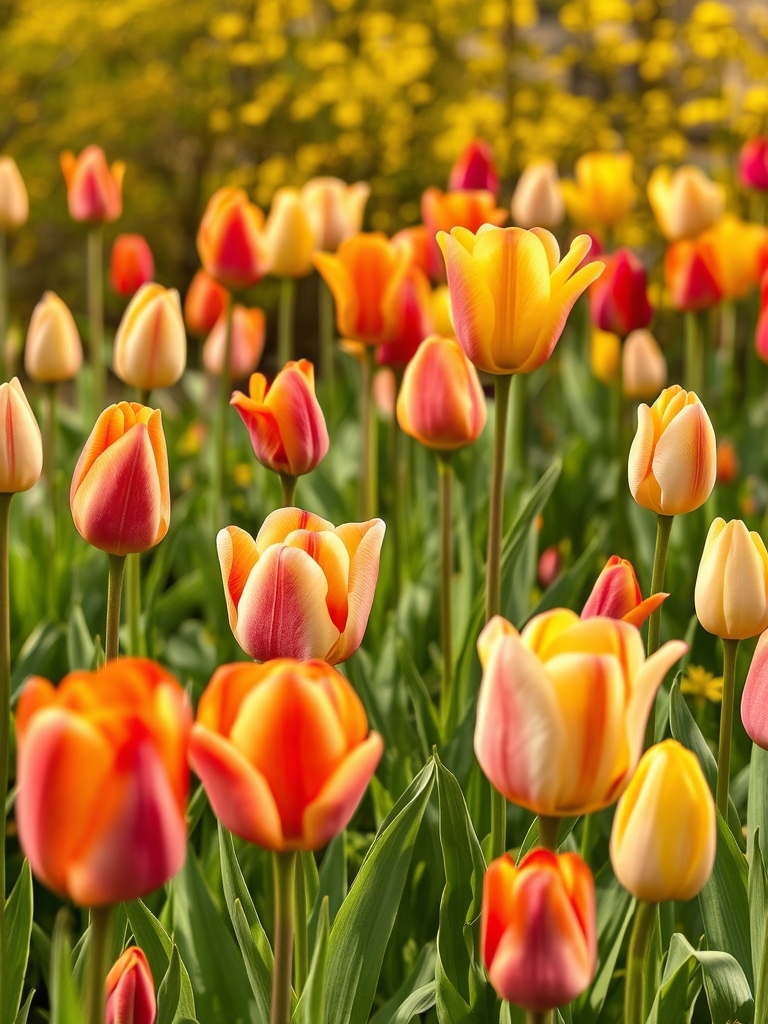
Understanding tulip bloom times is essential for a vibrant garden. Tulips bloom at different times, ranging from early to late spring, with some varieties blooming in the summer. Knowing the bloom time helps plan a staggered flowering effect, ensuring a constant display of colorful blooms throughout the growing season.
Using Compost to Enhance Soil Quality
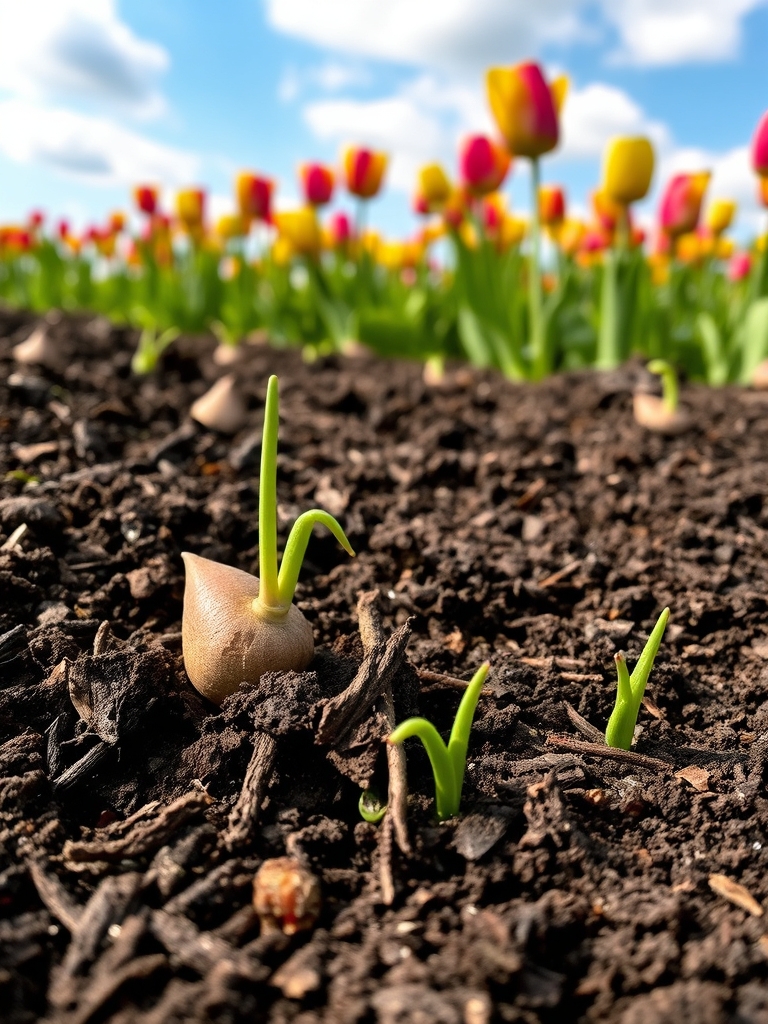
Using compost to enhance soil quality is essential for a healthy tulip garden. Compost adds nutrients, improves drainage, and increases the soil’s water-holding capacity. Mixing compost into the soil before planting tulip bulbs promotes robust growth and vibrant blooms. It also supports beneficial microorganisms, creating a balanced ecosystem for the tulips to thrive.
Protecting Tulips From Pests and Diseases
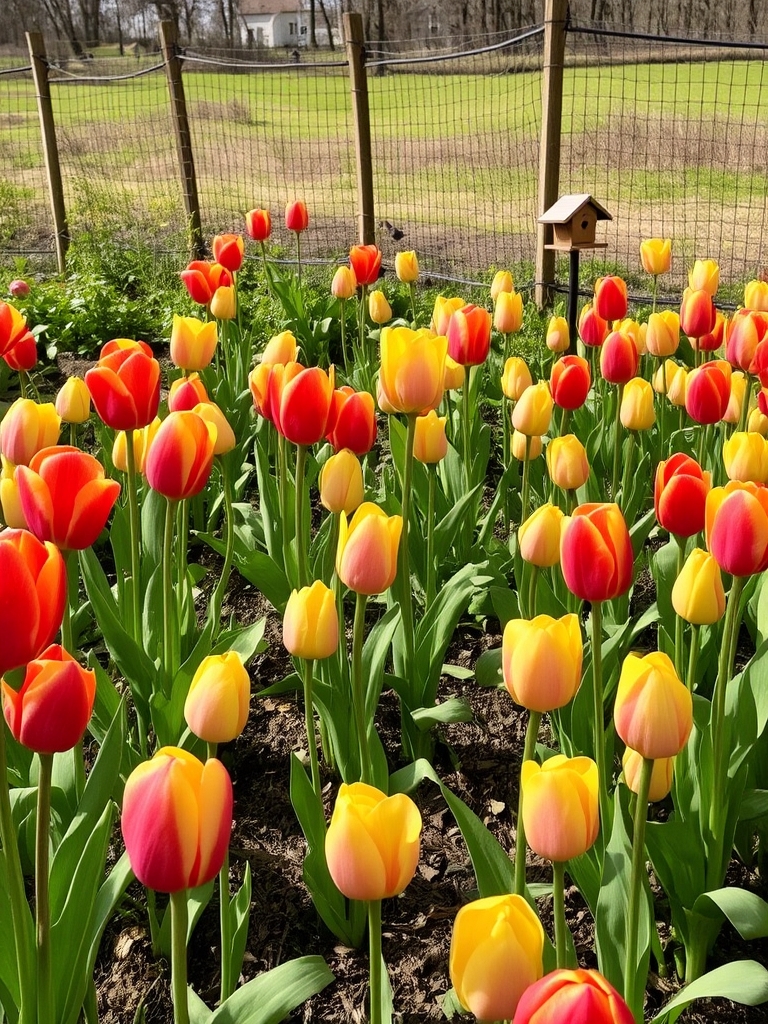
To protect tulips from pests and diseases, use organic methods like introducing beneficial insects and practicing good garden hygiene. Regularly inspect plants for signs of damage or infection, and remove any affected areas. Apply fungicides or pesticides as needed, and consider using physical barriers to prevent pests like deer and rabbits from reaching the tulips.
Creating a Beautiful Tulip Garden Design
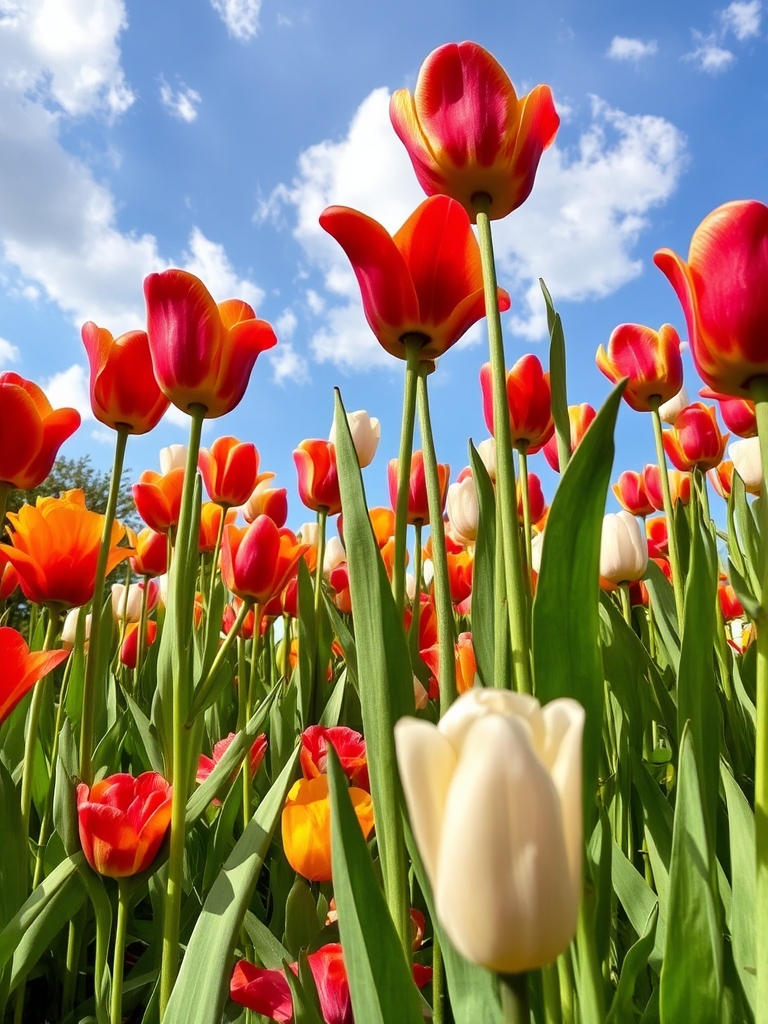
To create a beautiful tulip garden design, choose a mix of tulip varieties with different bloom times and colors. Consider the mature size and growth habits of each variety when planning the layout. Plant taller varieties towards the north to prevent shading smaller tulips, and group similar bloom times together for a stunning display.
Mixing Tulips With Other Spring Flowers
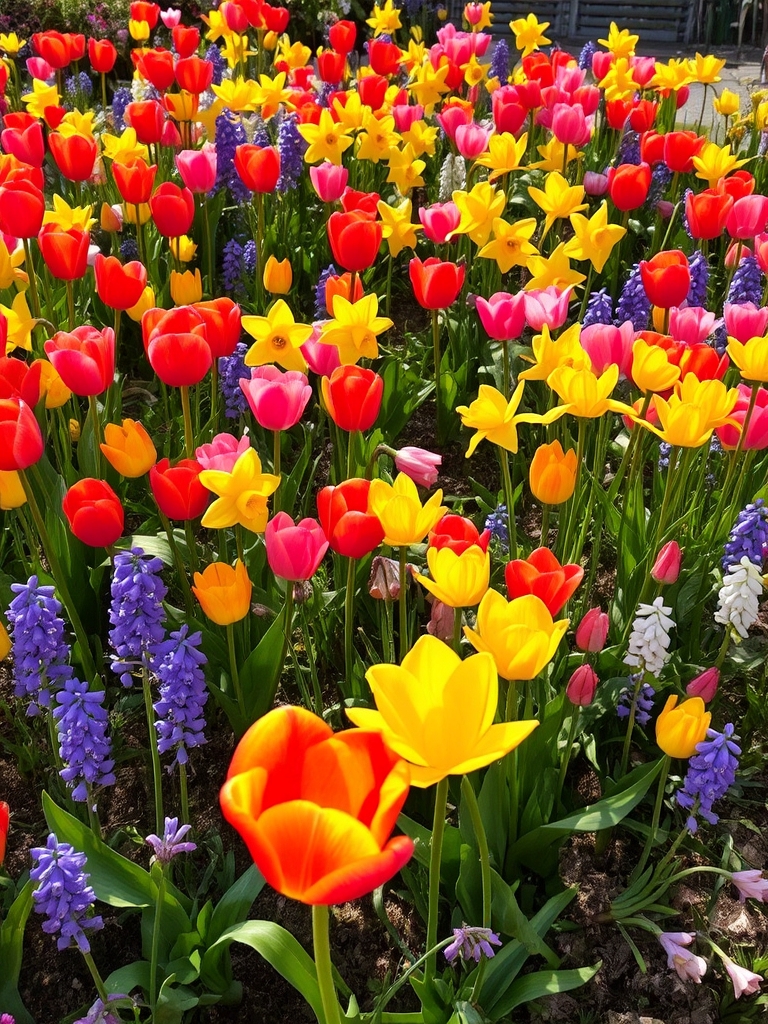
Mixing tulips with other spring flowers creates a vibrant display. Combine them with daffodils, hyacinths, or grape hyacinths for a colorful and fragrant garden. Consider the bloom times and heights of the flowers to guarantee a harmonious and visually appealing mix. This combination enhances the beauty of tulips and adds depth to the garden.
Caring for Tulips After They Bloom

After tulips bloom, allow the foliage to die back naturally, as this will help the bulb recharge for next year’s bloom. Avoid cutting or tying the leaves, and keep the soil moist during this period. Once the foliage has yellowed and wilted, it can be removed, and the bulb can be left to dormancy.

